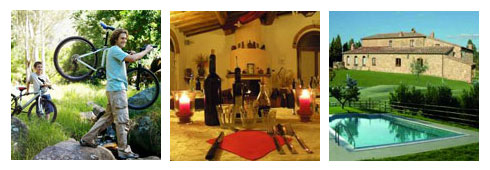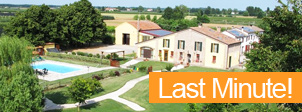Details:
 For generations it has dealt with farming activities, and today the Savelli family welcomes guests in the countryside of Pienza. Mr Luca accompanies us at the discovery of Farmhouse Bonello, in the heart of the Park of Val D’Orcia, among fruit trees, woods and farmlands.
For generations it has dealt with farming activities, and today the Savelli family welcomes guests in the countryside of Pienza. Mr Luca accompanies us at the discovery of Farmhouse Bonello, in the heart of the Park of Val D’Orcia, among fruit trees, woods and farmlands.
How was your farmhouse business started?
Our family has carried out farming activities for centuries, and the farm which currently hosts our farmhouse was bought 43 years ago as an extension of the farm. Six years ago it was restored in order to open the farmhouse, a business we have believed in and that we love: it is the passion for this job which animates us.
Which is the greatest satisfaction in your job?
Undoubtedly the relationship with our customers, which often turns into friendship.
What do you love the most of your land?
What people come to us for: our farmhouse is in a nature park that is a UNESCO World Heritage Site, so landscape and nature are certainly the most important features together with calm, peace and the daily relationhips among people.
Your farm is specialized in the production of wheat and cereals.
The cereal production is the main one, and wheat is harvested and transformed for the production of local pasta: this product is processed directly in the valley and in the province and is aimed to the sale in local shops in the province of Siena and Arezzo. The farming activity is accompanied by the vegetables growth for our restaurant and fruit trees for our jams.
Which are the dishes you guests prefer?
Local dishes, especially homemade pasta and ‘tagliata’ of Chianina meat. The production is entirely carried out by our family, and any dish, if prepared at home and with love, is very much appreciated by guests, since they rediscover old flavours and fragrances of wholesome food.
The farmhouse is hosted by a very ancient building: which are its aesthetic peculiarities?
Its building materials and different valuable architectural details. Every element tells something of the history of this place and the evolution it has gone through over the centuries. The finding of a small furnace for instance, allowed us to date the facility at the year 1000, but the signs that let us catch a glimpse of the different widenings and changes until the 18th century, when the building was used as an elementary school.

Comments are closed.